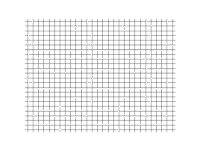
Photo from wikipedia
Time-domain constant-Q (CQ) viscoelastic wave equations have been derived to efficiently model Q, but are known to break down in accuracy in describing CQ attenuation at low Q. In view… Click to show full abstract
Time-domain constant-Q (CQ) viscoelastic wave equations have been derived to efficiently model Q, but are known to break down in accuracy in describing CQ attenuation at low Q. In view of this, a new time-domain viscoelastic wave equation for modeling wave propagation in anelastic medium is evaluated based on Kjartansson’s CQ model to improve the accuracy in describing CQ attenuation at low Q. We use an approximate frequency-domain viscoelastic wave equation to replace the accurate frequency-domain viscoelastic wave equation. Then, a new time-domain wave equation is derived by converting the approximate viscoelastic wave equation from the frequency domain to the time domain. The newly derived viscoelastic wave equation consists of several Laplacian differential operators with variable fractional order. We use an arbitrary-order Taylor series expansion (TSE) to approximate the derived mixed domain fractional Laplacian operators, and realize the decoupling of the wavenumber and fractional order. Then, the proposed viscoelastic wave equation can be solved directly using the staggered-grid pseudospectral method (SGPSM). We evaluate the precision of the new viscoelastic wave equation by comparing the numerical solutions with the analytical solutions in homogeneous medium. Theoretical curve analysis and numerical results indicate that the proposed fractional viscoelastic wave equation has higher precision in describing CQ attenuation than that of the traditional fractional viscoelastic wave equation, especially for cases that P-wave quality factor QP is less than 10, and S-wave quality factor QS is less than 8. Furthermore, we use two numerical examples to verify the effectiveness of the TSE SGPSM in heterogeneous media. The discussion shows that the advantage of using our fractional viscoelastic wave equation over the traditional fractional viscoelastic wave equation is the higher precision in describing CQ attenuation at different frequency.
Journal Title: Bulletin of the Seismological Society of America
Year Published: 2021
Link to full text (if available)
Share on Social Media: Sign Up to like & get
recommendations!